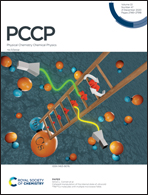Integrative structural modeling of a multidomain polo-like kinase†
Abstract
Polo-like kinase 1 (PLK1) is a key regulator and coordinator for mitotic signaling that contains two major functional units of a kinase domain (KD) and a polo-box domain (PBD). While individual domain structures of the KD and the PBD are known, how they interact and assemble into a functional complex remains an open question. The structural model from the KD–PBD–Map205PBM heterotrimeric crystal structure of zebrafish PLK1 represents a major step in understanding the KD and the PBD interactions. However, how these two domains interact when connected by a linker in the full length PLK1 needs further investigation. By integrating different sources of structural data from small-angle X-ray scattering, hydroxyl radical protein footprinting, and computational sampling, here we report an overall architecture for PLK1 multidomain assembly between the KD and the PBD. Our model revealed that the KD uses its C-lobe to interact with the PBD via the site near the phosphopeptide binding site in its auto-inhibitory state in solution. Disruption of this auto-inhibition via site-directed mutagenesis at the KD–PBD interface increases its kinase activity, supporting the functional role of KD–PBD interactions predicted for regulating the PLK1 kinase function. Our results indicate that the full length human PLK1 takes dynamic structures with a variety of domain–domain interfaces in solution.

- This article is part of the themed collection: 2020 PCCP HOT Articles


 Please wait while we load your content...
Please wait while we load your content...